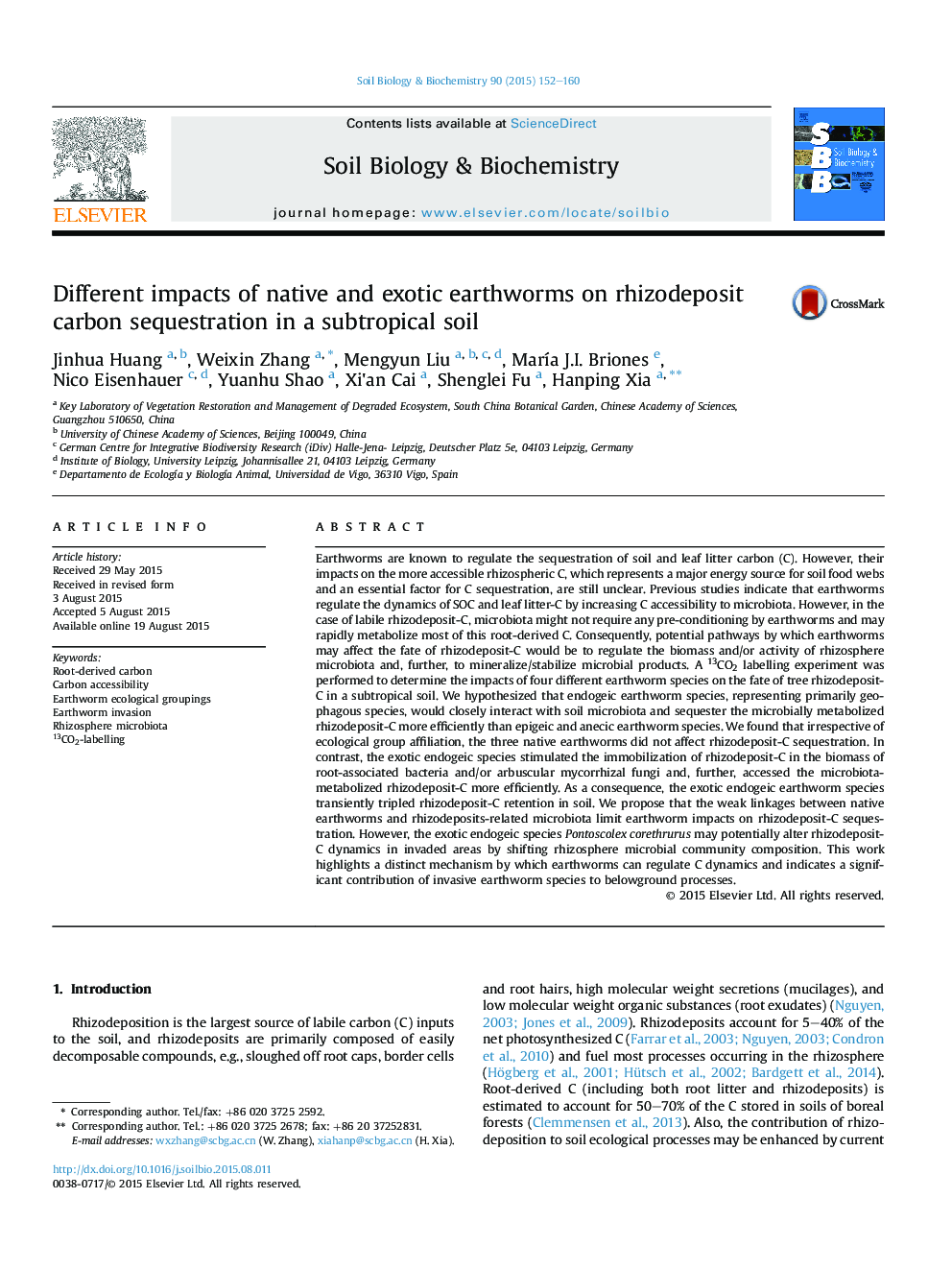| کد مقاله | کد نشریه | سال انتشار | مقاله انگلیسی | نسخه تمام متن |
|---|---|---|---|---|
| 2024388 | 1542594 | 2015 | 9 صفحه PDF | دانلود رایگان |
• In a 13CO2 labelling experiment we studied earthworm effects on rhizodeposit-C.
• Native earthworms in southern China negligibly affect rhizodeposit-C retention.
• The exotic endogeic species tripled the retention of rhizodeposit-C in soil.
• Earthworm effects were mediated by regulating microbiota-worked rhizodeposit-C.
• C sequestration increased with earthworm impact on C accessibility to microbiota.
Earthworms are known to regulate the sequestration of soil and leaf litter carbon (C). However, their impacts on the more accessible rhizospheric C, which represents a major energy source for soil food webs and an essential factor for C sequestration, are still unclear. Previous studies indicate that earthworms regulate the dynamics of SOC and leaf litter-C by increasing C accessibility to microbiota. However, in the case of labile rhizodeposit-C, microbiota might not require any pre-conditioning by earthworms and may rapidly metabolize most of this root-derived C. Consequently, potential pathways by which earthworms may affect the fate of rhizodeposit-C would be to regulate the biomass and/or activity of rhizosphere microbiota and, further, to mineralize/stabilize microbial products. A 13CO2 labelling experiment was performed to determine the impacts of four different earthworm species on the fate of tree rhizodeposit-C in a subtropical soil. We hypothesized that endogeic earthworm species, representing primarily geophagous species, would closely interact with soil microbiota and sequester the microbially metabolized rhizodeposit-C more efficiently than epigeic and anecic earthworm species. We found that irrespective of ecological group affiliation, the three native earthworms did not affect rhizodeposit-C sequestration. In contrast, the exotic endogeic species stimulated the immobilization of rhizodeposit-C in the biomass of root-associated bacteria and/or arbuscular mycorrhizal fungi and, further, accessed the microbiota-metabolized rhizodeposit-C more efficiently. As a consequence, the exotic endogeic earthworm species transiently tripled rhizodeposit-C retention in soil. We propose that the weak linkages between native earthworms and rhizodeposits-related microbiota limit earthworm impacts on rhizodeposit-C sequestration. However, the exotic endogeic species Pontoscolex corethrurus may potentially alter rhizodeposit-C dynamics in invaded areas by shifting rhizosphere microbial community composition. This work highlights a distinct mechanism by which earthworms can regulate C dynamics and indicates a significant contribution of invasive earthworm species to belowground processes.
Journal: Soil Biology and Biochemistry - Volume 90, November 2015, Pages 152–160
